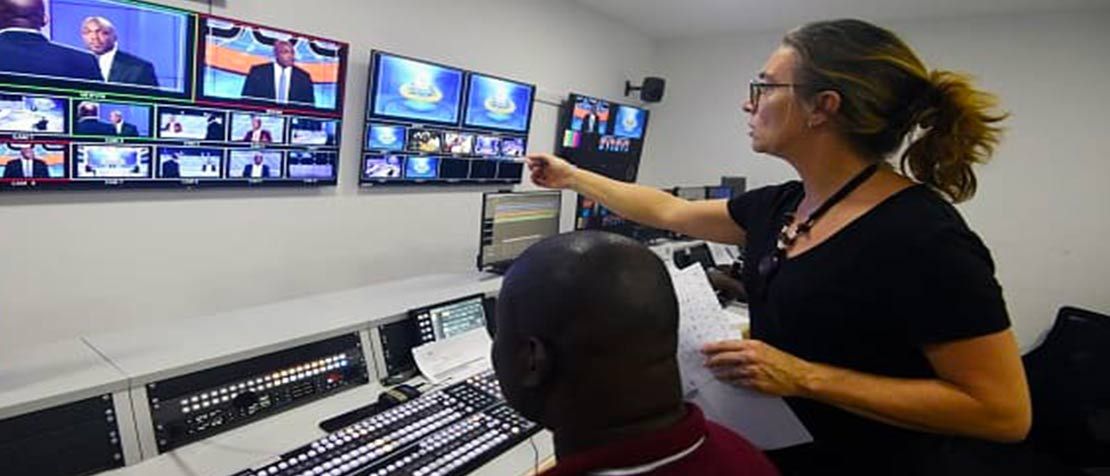
New ITU-D study paper helps countries consider cost structures and new models for digital broadcasting
The change from analogue to digital television broadcasting has already brought worldwide opportunities and challenges for a range of stakeholders – from manufacturers to broadcasters to end-users.
It has not only brought possibilities for structured development of digital terrestrial broadcasting, but also sufficient flexibilities for adaptation to a new telecommunication environment.
However, the digital broadcasting transition can have a significant impact in terms of costs. Considering the cost structure is key to decision-making, and having in mind the myriad of costs each stakeholder needs to face is fundamental.
Additionally, broadcasting services are evolving and undergoing transformation. New broadcasting technologies, services and applications, for example, are being provided to users. These are enriching the user experience and driving new demand.
The cost component of the transition to digital
For those countries who have not yet made the transition, a new ITU study paper recommends that they consider the cost component of the digital broadcasting transition carefully when planning and implementing the steps towards a successful migration to digital broadcasting, and the analogue switch-off.
Each stakeholder in the digital switchover will face a different set of costs and most of these occur at the early phases of the transition, particularly during the digital terrestrial television (DTT) roll-out and simulcast phases.
The main entities involved are governments/regulators, the broadcast industry and consumers.
3 trends to reduce costs
The study paper identifies 1) consolidation; 2) co-investment; and 3) infrastructure sharing as 3 key trends to reduce costs and allow for massive investments in network deployment and content delivery.
“Regulators need to re-assess their competition, regulations, and also stimulation of investment.” — Roberto Hirayama
Broadcasters need to comprehensively utilize the broadcasting and television frequency resources, use the broadcasting TV network, broadband network, and operation platform to make full use of the industry chain resource integration advantages, to build a converged broadcast TV and broadband media network.
Broadcasters also need to optimize traditional broadcast and TV services, gradually provide high-quality new video services, and coordinate wired and wireless satellite traditional broadcast and TV distribution channels to form a seamless network with seamless coverage, providing richer and smoother service experience.
“It is good that regulators come and analyse this new ecosystem and these new opportunities.”
Roberto Hirayama, Rapporteur of the ITU Telecommunication Development Sector’s Study Group 1, Question 2, briefly outlines the cost structure of the digital transition, and new services and applications.
Hirayama explains that the ITU study identifies the various costs for different stakeholders in the transition to digital broadcasting. It includes government costs on planning and consumer awareness, costs to broadcasters in implementation, as well as user costs associated with the need to purchase items such as receivers and antennas.
The study also covers new services and applications in broadcasting.
“We identified that these new trends are, in a way, changing the environment … and the costs involved in the service provisioning,” said Hirayama. “It is good that regulators come and analyse this new ecosystem and these new opportunities.”
Thorough planning required
ITU recommends that in the transition from analogue to digital, that governments ensure thorough planning so that all stakeholders are aware of their responsibilities, as well as the timeframe required for implementation and the building of new networks.
For new services and applications, Hirayama says that “regulators need to re-assess their competition, regulations, and also stimulation of investment.”
New broadcasting services and applications
The emergence of new broadcasting technologies and standards that could be considered by developing countries is becoming a major trend, and has the potential to entirely change the business models for content distribution.
The status of the broadcasting and TV industry alongside the Internet industry points to three major forces in the future industry competition namely: carriers, Internet enterprises, and terminal vendors.
Carriers
Carriers’ development strategies mainly rely on the advantages of the traditional broadcasting and TV industry to integrate the upstream and downstream of the industry value chain.
Internet enterprises
The development strategy of Internet enterprises is to push Internet products and services to the broadcasting and mobile markets by leveraging Internet operation experience and user resources, and fully utilize carriers’ network resources to implement cross-platform interconnection.
Terminal vendors
The development strategy of terminal vendors aims to build comprehensive service capabilities around terminals. This includes developing intelligent terminals to meet users’ requirements around audiovisual, network, and data.
________________________________________________ Follow the work of ITU-D Study Group 1 Question 2/1 Strategies, policies, regulations and methods of migration and adoption of digital broadcasting and implementation of new services.
Subscribe to our mailing list here.
Learn more about ITU-D study groups.
More information on ITU development work on broadcasting is available here.
Photo by SIA KAMBOU/AFP via Getty Images